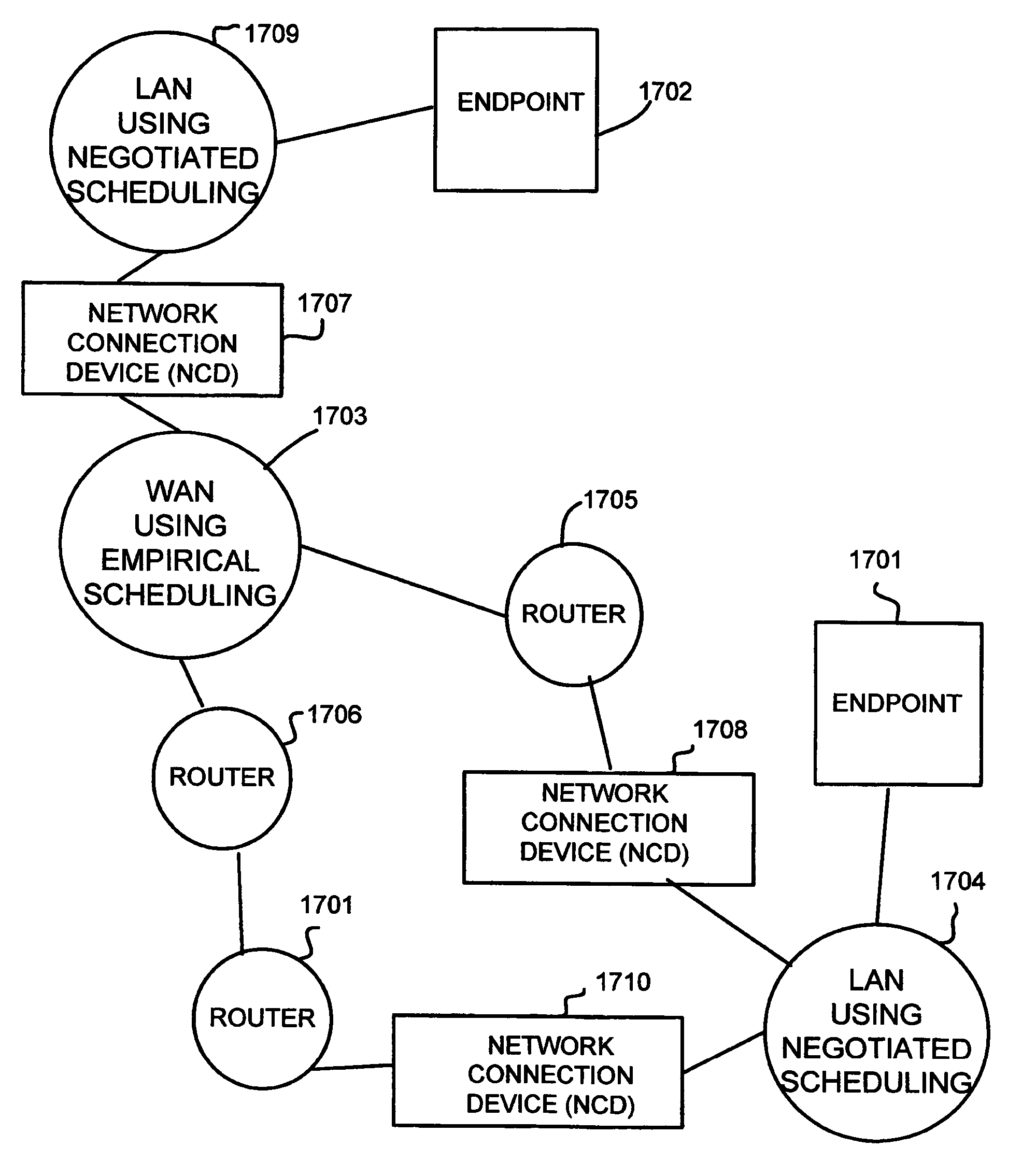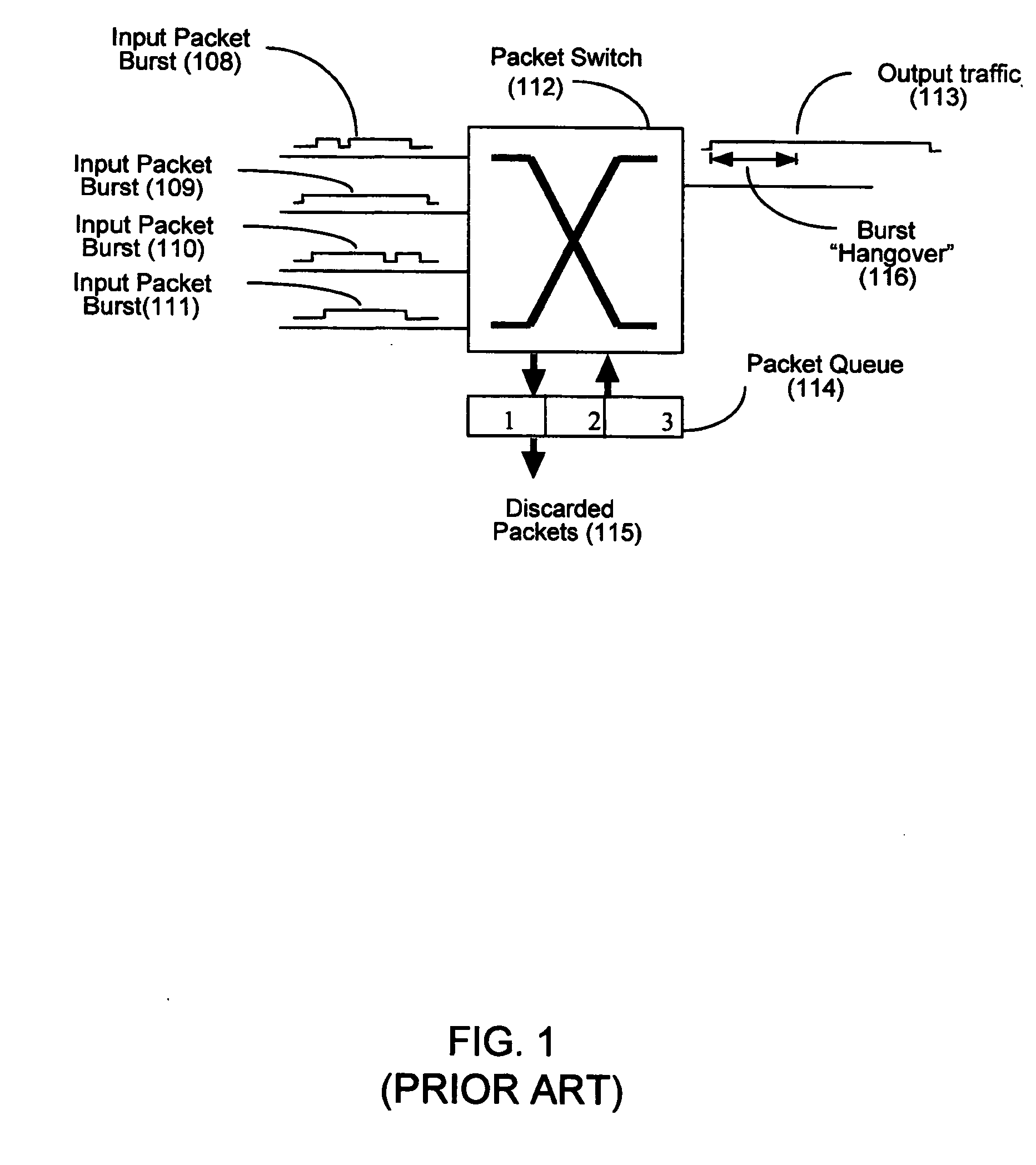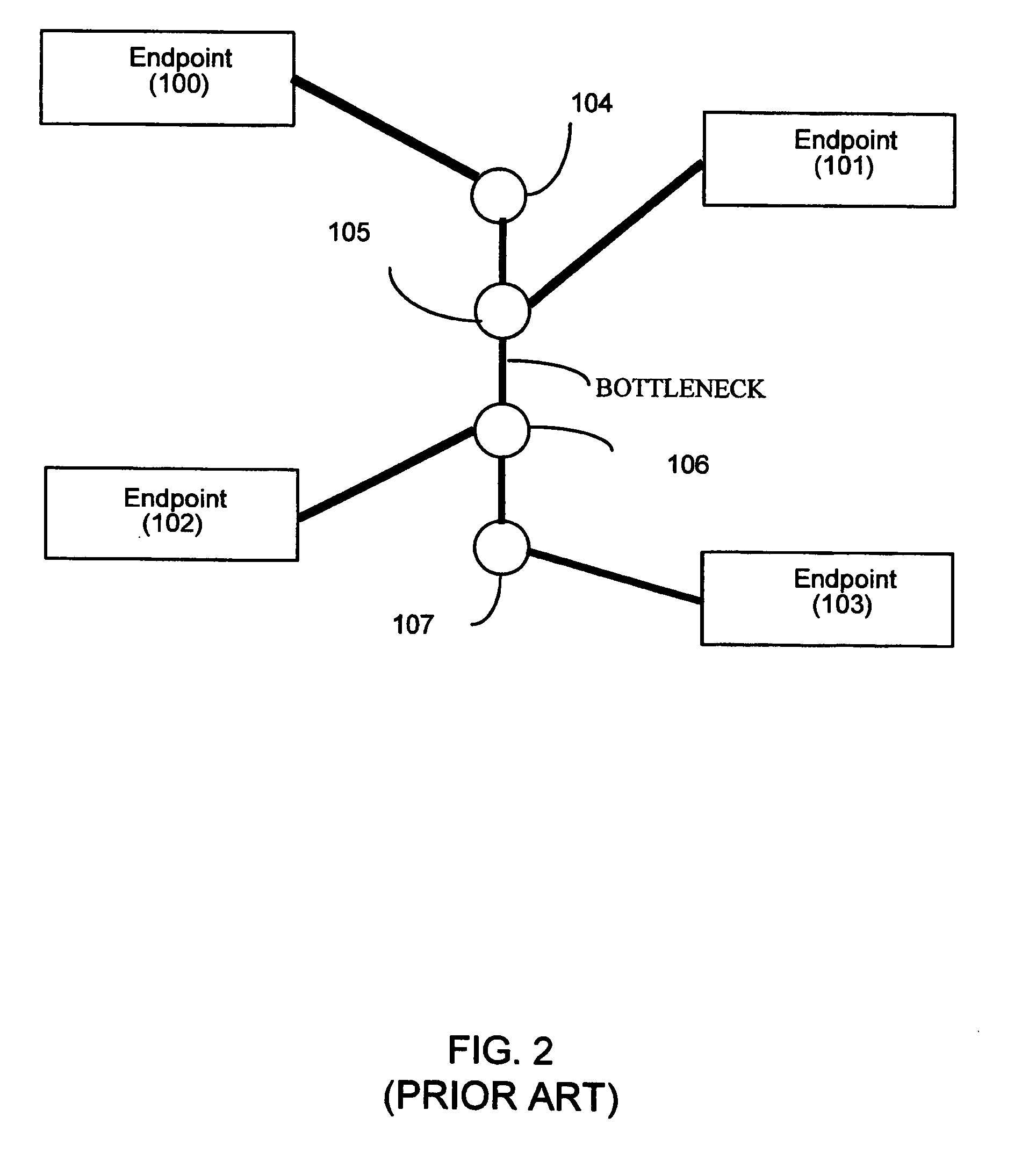Network connection device
a network connection and connection device technology, applied in the field of network connection devices, can solve problems such as network impairment, bursts of inputs that must be handled, and oversubscription of network resources
- Summary
- Abstract
- Description
- Claims
- Application Information
AI Technical Summary
Benefits of technology
Problems solved by technology
Method used
Image
Examples
Embodiment Construction
[0033] Before describing various principles of the present invention, the following explains how packets can be transmitted in networks according to either an empirically determined scheduling technique or a negotiated scheduling technique. It should be clear that both techniques can be used on any type of network.
[0034] A. Empirical Scheduling of Network Packets
[0035] For networks that schedule packets using an empirical approach, a priority scheme can be used to assign priority levels to data packets in a network such that delivery of packets intended for real-time or near real-time delivery (e.g., phone calls, video frames, or TDM data packets converted into IP packets) are assigned the highest priority in the network. A second-highest priority level is assigned to data packets that are used for testing purposes (i.e. the so-called test packets). A third-highest priority level is assigned to remaining data packets in the system, such as TCP data used by web browsers. FIG. 6 ill...
PUM
 Login to View More
Login to View More Abstract
Description
Claims
Application Information
 Login to View More
Login to View More - R&D
- Intellectual Property
- Life Sciences
- Materials
- Tech Scout
- Unparalleled Data Quality
- Higher Quality Content
- 60% Fewer Hallucinations
Browse by: Latest US Patents, China's latest patents, Technical Efficacy Thesaurus, Application Domain, Technology Topic, Popular Technical Reports.
© 2025 PatSnap. All rights reserved.Legal|Privacy policy|Modern Slavery Act Transparency Statement|Sitemap|About US| Contact US: help@patsnap.com



